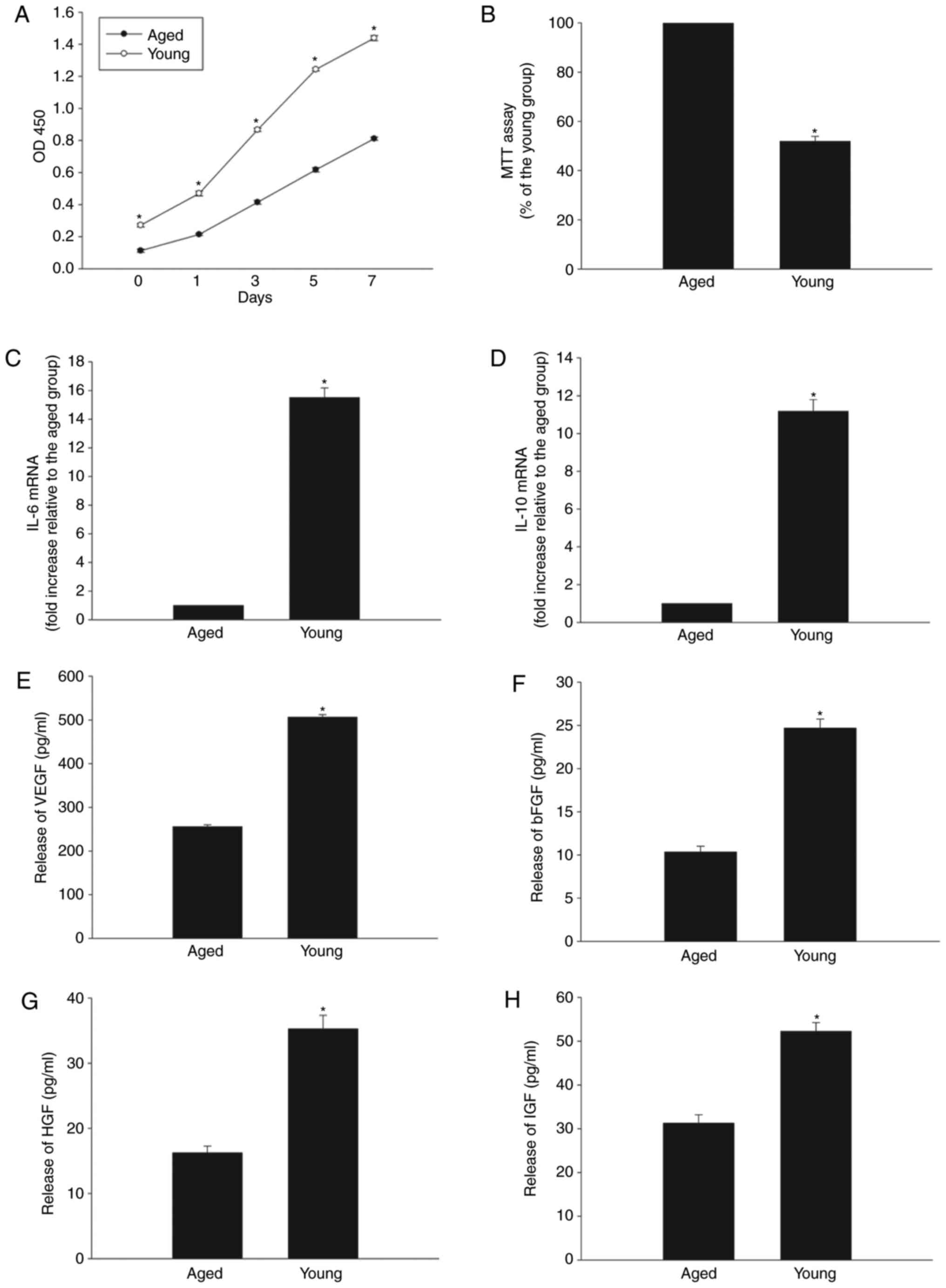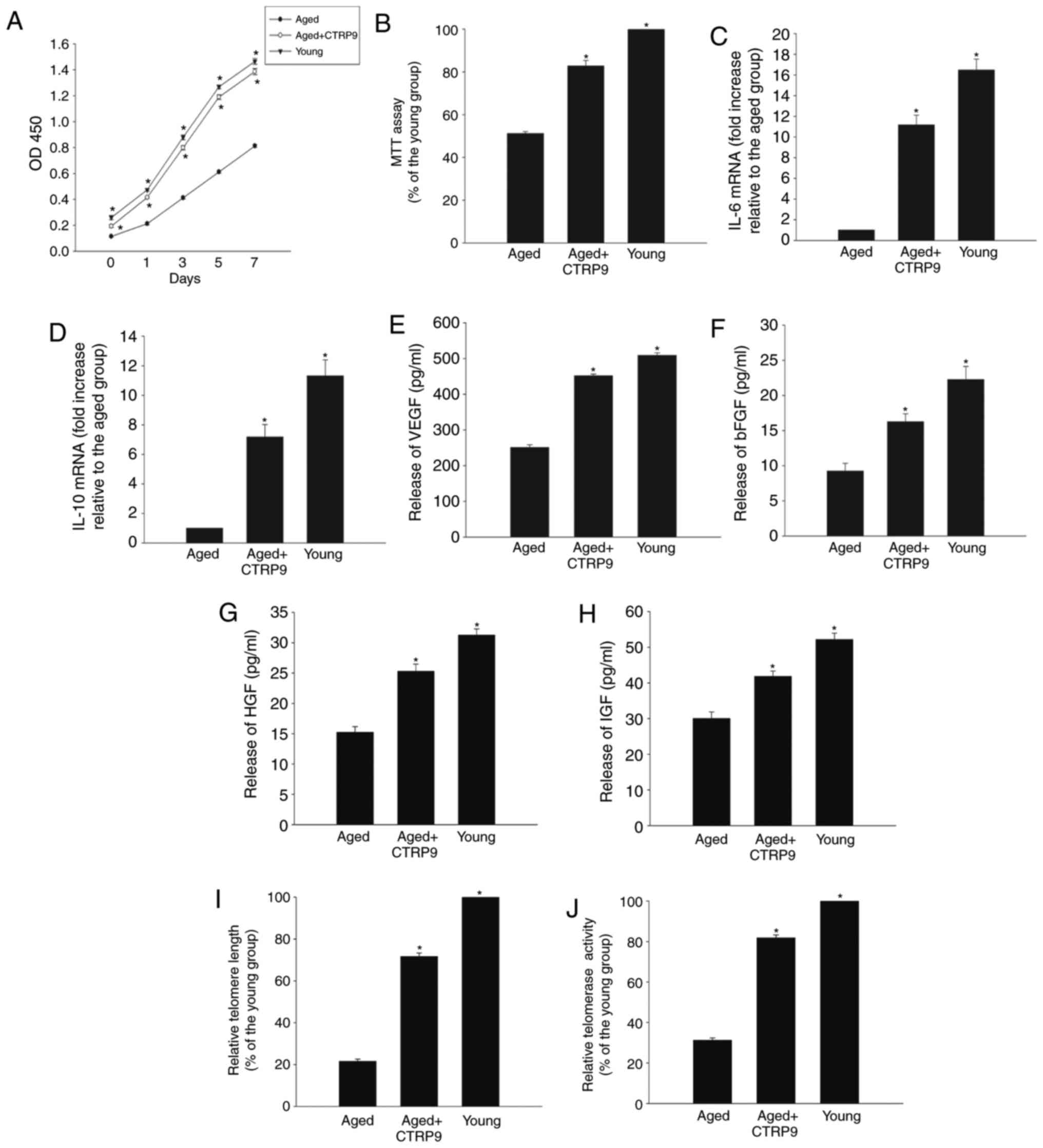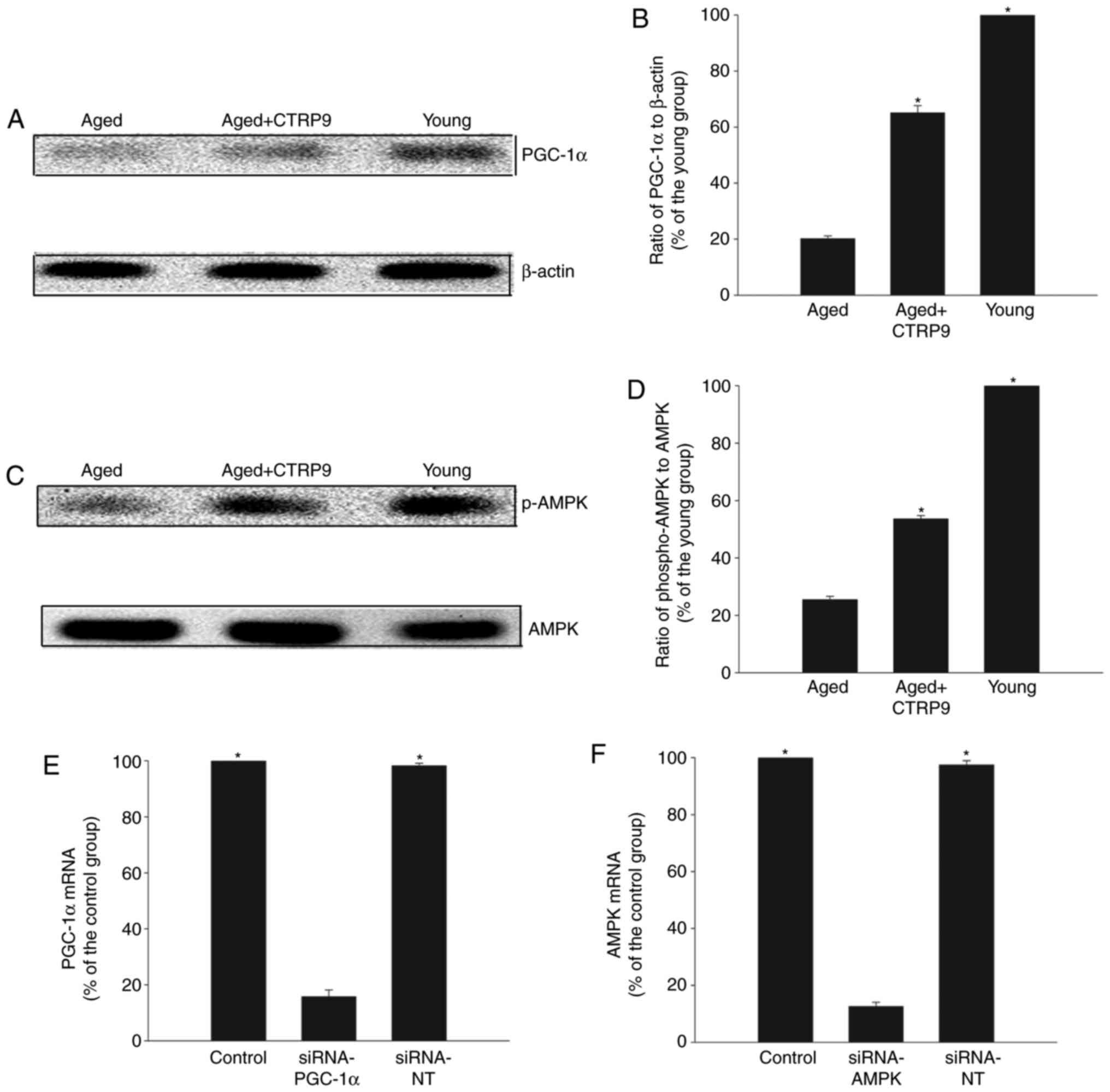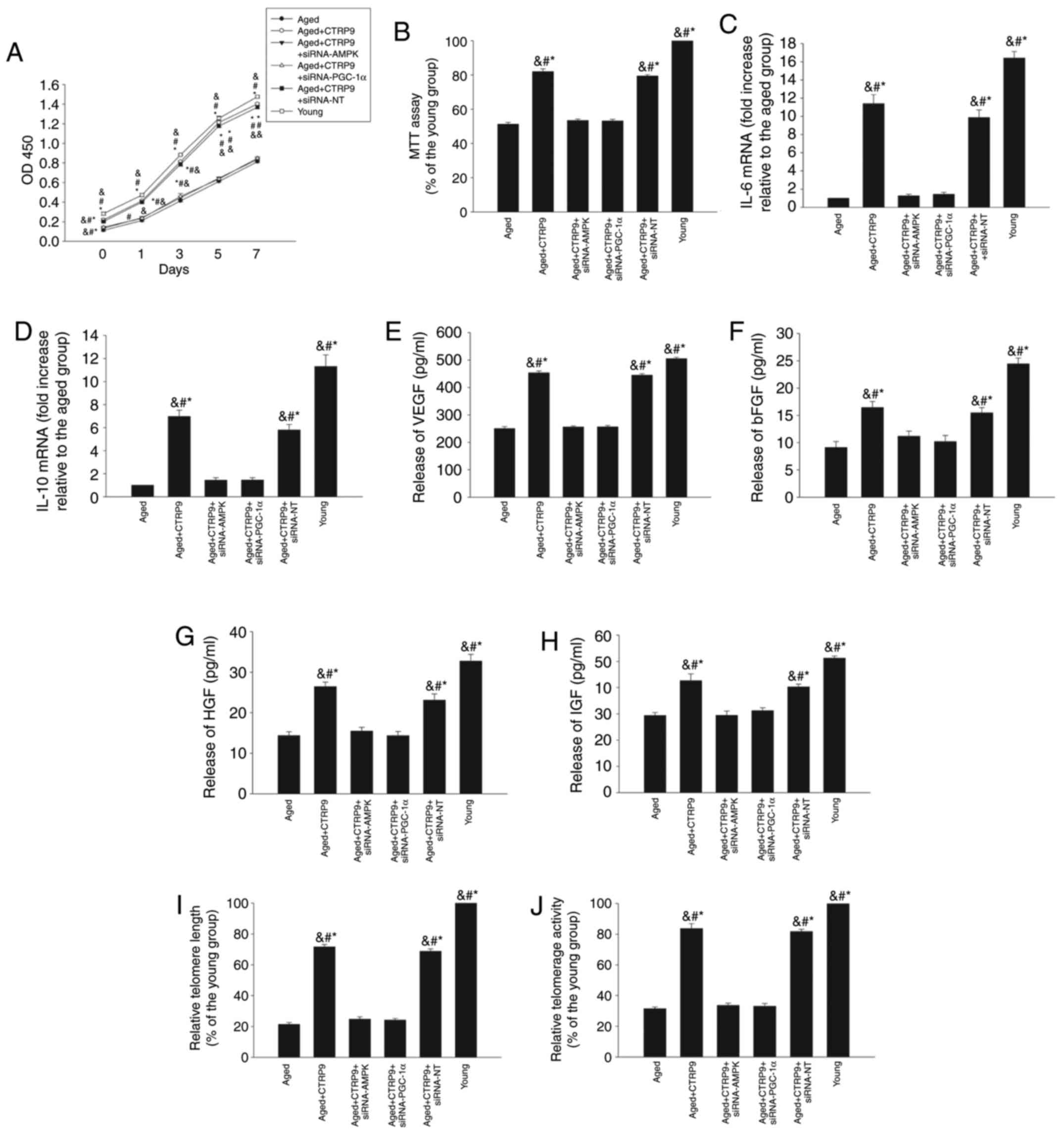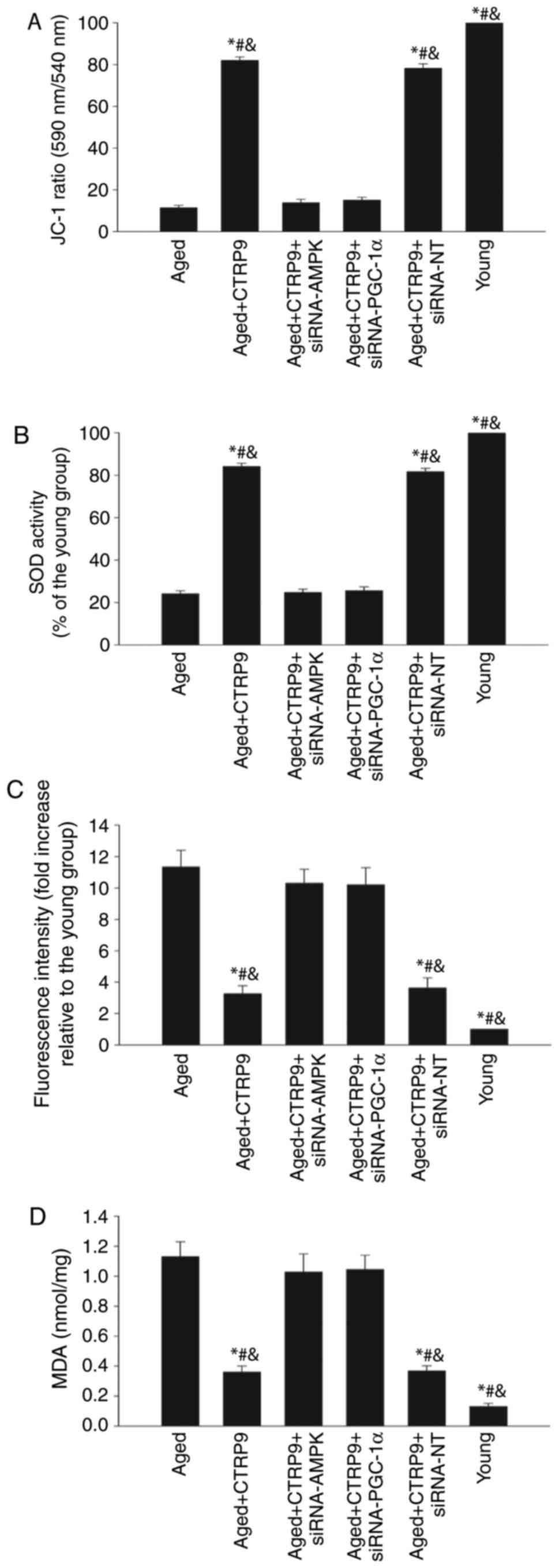|
1
|
Iadecola C: The neurovascular unit coming
of age: A journey through neurovascular coupling in health and
disease. Neuron. 96:17–42. 2017. View Article : Google Scholar : PubMed/NCBI
|
|
2
|
van Velthoven CT, van de Looij Y,
Kavelaars A, Zijlstra J, van Bel F, Huppi PS, Sizonenko S and
Heijnen CJ: Mesenchymal stem cells restore cortical rewiring after
neonatal ischemia in mice. Ann Neurol. 71:785–796. 2012. View Article : Google Scholar : PubMed/NCBI
|
|
3
|
van Velthoven CT, Kavelaars A and Heijnen
CJ: Mesenchymal stem cells as a treatment for neonatal ischemic
brain damage. Pediatr Res. 71:474–481. 2012. View Article : Google Scholar : PubMed/NCBI
|
|
4
|
Akunuru S and Geiger H: Aging, clonality,
and rejuvenation of hematopoietic stem cells. Trends Mol Med.
22:701–712. 2016. View Article : Google Scholar : PubMed/NCBI
|
|
5
|
Townsley DM, Dumitriu B and Young NS: Bone
marrow failure and the telomeropathies. Blood. 124:2775–2783. 2014.
View Article : Google Scholar : PubMed/NCBI
|
|
6
|
Liu M, Lei H, Dong P, Fu X, Yang Z, Yang
Y, Ma J, Liu X, Cao Y and Xiao R: Adipose-derived mesenchymal stem
cells from the elderly exhibit decreased migration and
differentiation abilities with senescent properties. Cell
Transplant. 26:1505–1519. 2017. View Article : Google Scholar : PubMed/NCBI
|
|
7
|
Badan I, Buchhold B, Hamm A, Gratz M,
Walker LC, Platt D, Kessler Ch and Popa-Wagner A: Accelerated glial
reactivity to stroke in aged rats correlates with reduced
functional recovery. J Cereb Blood Flow Metab. 23:845–854. 2003.
View Article : Google Scholar : PubMed/NCBI
|
|
8
|
Goldstein BJ, Scalia RG and Ma XL:
Protective vascular and myocardial effects of adiponectin. Nat Clin
Pract Cardiovasc Med. 6:27–35. 2009. View Article : Google Scholar :
|
|
9
|
Gonon AT, Widegren U, Bulhak A, Salehzadeh
F, Persson J, Sjöquist PO and Pernow J: Adiponectin protects
against myocardial ischaemia-reperfusion injury via AMP-activated
protein kinase, Akt, and nitric oxide. Cardiovasc Res. 78:116–122.
2008. View Article : Google Scholar : PubMed/NCBI
|
|
10
|
Yang G, Qin C, Wang B, Jia J, Yuan X, Sun
C and Li W: Molecular identification and functional analysis of
CTRP9 in Epinepheluscoioides. J Mol Endocrinol. 58:179–191. 2017.
View Article : Google Scholar : PubMed/NCBI
|
|
11
|
Bai S, Cheng L, Yang Y, Fan C, Zhao D, Qin
Z, Feng X, Zhao L, Ma J, Wang X, et al: C1q/TNF-related protein 9
protects diabetic rat heart against ischemia reperfusion injury:
Role of endoplasmic reticulum stress. Oxid Med Cell Longev.
2016:19020252016. View Article : Google Scholar : PubMed/NCBI
|
|
12
|
Zhao D, Yang J and Yang L: Insights for
oxidative stress and mTOR signaling in myocardial
ischemia/reperfusion injury under diabetes. Oxid Med Cell Longev.
2017:64374672017. View Article : Google Scholar : PubMed/NCBI
|
|
13
|
Yan W, Guo Y, Tao L, Lau WB, Gan L, Yan Z,
Guo R, Gao E, Wong GW, Koch WL, et al: C1q/tumor necrosis
factor-related protein-9 regulates the fate of implanted
mesenchymal stem cells and mobilizes their protective effects
against ischemic heart injury via multiple novel signaling
pathways. Circulation. 136:2162–2177. 2017. View Article : Google Scholar : PubMed/NCBI
|
|
14
|
Rabinovitch RC, Samborska B, Faubert B, Ma
EH, Gravel SP, Andrzejewski S, Raissi TC, Pause A, St-Pierre J and
Jones RG: AMPK maintains cellular metabolic homeostasis through
regulation of mitochondrial reactive oxygen species. Cell Rep.
21:1–9. 2017. View Article : Google Scholar : PubMed/NCBI
|
|
15
|
Oakhill JS, Scott JW and Kemp BE: AMPK
functions as an adenylate charge-regulated protein kinase. Trends
Endocrinol Metab. 23:125–132. 2012. View Article : Google Scholar : PubMed/NCBI
|
|
16
|
Chandel NS and Tuveson DA: The promise and
perils of antioxidants for cancer patients. N Engl J Med.
371:177–178. 2014. View Article : Google Scholar : PubMed/NCBI
|
|
17
|
Riera CE, Merkwirth C, Filho CDDM and
Dillin A: Signaling networks determining life span. Annu Rev
Biochem. 85:35–64. 2016. View Article : Google Scholar : PubMed/NCBI
|
|
18
|
Goldberg J, Currais A, Prior M, Fischer W,
Chiruta C, Ratliff E, Daugherty D, Dargusch R, Finley K,
Esparza-Moltó PB, et al: The mitochondrial ATP synthase is a shared
drug target for aging and dementia. Aging Cell. 17:2018. View Article : Google Scholar : PubMed/NCBI
|
|
19
|
Sun H, Zhu X, Zhou Y, Cai W and Qiu L:
C1q/TNF-related protein-9 ameliorates Ox-LDL-induced endothelial
dysfunction via PGC-1α/AMPK-mediated antioxidant enzyme induction.
Int J Mol Sci. 18:10972017. View Article : Google Scholar
|
|
20
|
Gharibi B, Farzadi S, Ghuman M and Hughes
FJ: Inhibition of Akt/mTOR attenuates age-related changes in
mesenchymal stem cells. Stem Cells. 32:2256–2266. 2014. View Article : Google Scholar : PubMed/NCBI
|
|
21
|
Otsu K, Das S, Houser SD, Quadri SK,
Bhattacharya S and Bhattacharya J: Concentration-dependent
inhibition of angiogenesis by mesenchymal stem cells. Blood.
113:4197–4205. 2009. View Article : Google Scholar :
|
|
22
|
Xia W, Xie C, Jiang M and Hou M: Improved
survival of mesenchymal stem cells by macrophage migration
inhibitory factor. Mol Cell Biochem. 404:11–24. 2015. View Article : Google Scholar : PubMed/NCBI
|
|
23
|
Xia W, Zhuang L, Deng X and Hou M: Long
noncoding RNA-p21 modulates cellular senescence via the
Wnt/β-catenin signaling pathway in mesenchymal stem cells. Mol Med
Rep. 16:7039–7047. 2017. View Article : Google Scholar : PubMed/NCBI
|
|
24
|
Livak KJ and Schmittgen TD: Analysis of
relative gene expression data using real-time quantitative PCR and
the 2(−Delta Delta C(T)) method. Methods. 25:402–408. 2001.
View Article : Google Scholar
|
|
25
|
Crepin T, Carron C, Roubiou C, Gaugler B,
Gaiffe E, Simula-Faivre D, Ferrand C, Tiberghien P, Chalopin JM,
Moulin B, et al: ATG-induced accelerated immune senescence:
Clinical implications in renal transplant recipients. Am J
Transplant. 15:1028–1038. 2015. View Article : Google Scholar : PubMed/NCBI
|
|
26
|
Xie Z, Xia W and Hou M: Long intergenic
noncoding RNA-p21 mediates cardiac senescence via the Wnt/β-catenin
signaling pathway in doxorubicin-induced cardiotoxicity. Mol Med
Rep. 17:2695–2704. 2018.
|
|
27
|
Smith BD, Smith GL, Hurria A, Hortobagyi
GN and Buchholz TA: Future of cancer incidence in the United
States: Burdens upon an aging, changing nation. J Clin Oncol.
27:2758–2765. 2009. View Article : Google Scholar : PubMed/NCBI
|
|
28
|
Ye X, Hu J and Cui G: Therapy effects of
bone marrow stromal cells on ischemic stroke. Oxid Med Cell Longev.
2016:76829602016. View Article : Google Scholar : PubMed/NCBI
|
|
29
|
Gervois P, Wolfs E, Ratajczak J, Dillen Y,
Vangansewinkel T, Hilkens P, Bronckaers A, Lambrichts I and Struys
T: Stem cell-based therapies for ischemic stroke: Preclinical
results and the potential of imaging-assisted evaluation of donor
cell fate and mechanisms of brain regeneration. Med Res Rev.
36:1080–1126. 2016. View Article : Google Scholar : PubMed/NCBI
|
|
30
|
Li H, Liu P, Xu S, Li Y, Dekker JD, Li B,
Fan Y, Zhang Z, Hong Y, Yang G, et al: FOXP1 controls mesenchymal
stem cell commitment and senescence during skeletal aging. J Clin
Invest. 127:1241–1253. 2017. View
Article : Google Scholar : PubMed/NCBI
|
|
31
|
Xia W, Zhang F, Xie C, Jiang M and Hou M:
Macrophage migration inhibitory factor confers resistance to
senescence through CD74-dependent AMPK-FOXO3a signaling in
mesenchymal stem cells. Stem Cell Res Ther. 6:822015. View Article : Google Scholar : PubMed/NCBI
|
|
32
|
Loisel S, Dulong J, Ménard C, Renoud ML,
Meziere N, Isabelle B, Latour M, Bescher N, Pedeux R, Bertheuil N,
et al: Brief report: Proteasomal indoleamine 2,3-dioxygenase
degradation reduces the immunosuppressive potential of clinical
grade-mesenchymal stromal cells undergoing replicative senescence.
Stem Cells. 35:1431–1436. 2017. View Article : Google Scholar : PubMed/NCBI
|
|
33
|
Liu Q, Zhang H, Lin J, Zhang R, Chen S,
Liu W, Sun M, Du W, Hou J and Yu B: C1q/TNF-related protein 9
inhibits the cholesterol-induced Vascular smooth muscle cell
phenotype switch and cell dysfunction by activating AMP-dependent
kinase. J Cell Mol Med. 21:2823–2836. 2017. View Article : Google Scholar : PubMed/NCBI
|
|
34
|
Patten IS and Arany Z: PGC-1 coactivators
in the cardiovascular system. Trends Endocrinol Metab. 23:90–97.
2012. View Article : Google Scholar
|
|
35
|
Sahin E, Colla S, Liesa M, Moslehi J,
Müller FL, Guo M, Cooper M, Kotton D, Fabian AJ, Walkey C, et al:
Telomere dysfunction induces metabolic and mitochondrial
compromise. Nature. 470:359–365. 2011. View Article : Google Scholar : PubMed/NCBI
|
|
36
|
Solis MA, Wei YH, Chang CH, Yu CH, Kuo PL
and Huang LL: Hyaluronan upregulates mitochondrial biogenesis and
reduces adenoside triphosphate production for efficient
mitochondrial function in slow-proliferating human mesenchymal stem
cells. Stem Cells. 34:2512–2524. 2016. View Article : Google Scholar : PubMed/NCBI
|
|
37
|
Jung CH, Lee MJ, Kang YM, Lee YL, Seol SM,
Yoon HK, Kang SW, Lee WJ and Park JY: C1q/TNF-related protein-9
inhibits cytokine-induced vascular inflammation and leukocyte
adhesiveness via AMP-activated protein kinase activation in
endothelial cells. Mol Cell Endocrinol. 419:235–243. 2015.
View Article : Google Scholar : PubMed/NCBI
|



